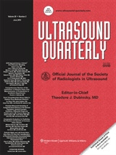
Ultrasound Quarterly
Scope & Guideline
Connecting Professionals Through Cutting-Edge Research.
Introduction
Aims and Scopes
- Clinical Applications of Ultrasound:
The journal emphasizes the clinical utility of ultrasound across various specialties, including obstetrics, gynecology, oncology, cardiology, and pediatrics. It showcases studies that explore the diagnostic capabilities and treatment planning facilitated by ultrasound. - Advanced Imaging Techniques:
Ultrasound Quarterly features research on advanced imaging methodologies, such as elastography and contrast-enhanced ultrasound. These innovative techniques aim to improve diagnostic accuracy and patient outcomes. - Quantitative and Qualitative Assessment:
The journal publishes studies that focus on both quantitative measurements (e.g., stiffness, volume) and qualitative evaluations (e.g., visual characteristics) of ultrasound findings, thereby contributing to a comprehensive understanding of ultrasound diagnostics. - Integration of Artificial Intelligence:
A notable area of focus is the integration of artificial intelligence in ultrasound imaging, which includes machine learning applications for image analysis and predictive modeling, enhancing the decision-making process in clinical settings. - Interdisciplinary Research:
The journal encourages interdisciplinary research that combines ultrasound with other imaging modalities and clinical practices, fostering collaboration among various medical fields and advancing the overall knowledge base.
Trending and Emerging
- Elastography and Tissue Characterization:
There is a marked increase in research centered around elastography and its applications in tissue characterization. This trend indicates a growing interest in non-invasive techniques that provide valuable insights into tissue stiffness and disease progression. - Artificial Intelligence and Machine Learning:
The integration of artificial intelligence and machine learning algorithms in ultrasound imaging is gaining momentum. Recent studies focus on developing predictive models and enhancing image analysis, which is crucial for improving diagnostic accuracy and efficiency. - Contrast-Enhanced Ultrasound:
Research on contrast-enhanced ultrasound is on the rise, particularly in the context of liver and vascular evaluations. This trend highlights the growing recognition of contrast agents in augmenting ultrasound capabilities and improving diagnostic outcomes. - Multimodal Imaging Approaches:
Emerging themes include the use of multimodal imaging approaches that combine ultrasound with other imaging techniques, such as MRI or CT. This trend reflects the need for comprehensive assessments that leverage the strengths of various modalities. - Point-of-Care Ultrasound:
The popularity of point-of-care ultrasound continues to expand, with a focus on its application in emergency and critical care settings. Recent studies emphasize its role in immediate diagnostics and decision-making, particularly in resource-limited environments.
Declining or Waning
- Traditional Diagnostic Techniques:
There has been a noticeable decline in studies focusing solely on traditional diagnostic techniques without incorporating advanced imaging or complementary methodologies. As the field progresses, there is a growing preference for innovative approaches that enhance diagnostic capabilities. - Pediatric Applications:
Research specifically targeting pediatric ultrasound applications appears to be waning. Although still relevant, the volume of studies dedicated to pediatric cases has decreased, possibly due to a shift towards broader applications in adult populations. - Basic Training and Education in Ultrasound:
There is a reduction in studies centered around basic training and educational methodologies for ultrasound practitioners. As the field evolves, the focus has shifted more towards advanced techniques and applications rather than foundational training.
Similar Journals

Journal of Medical Imaging
Revolutionizing Diagnostic Techniques for a Healthier TomorrowThe Journal of Medical Imaging, published by SPIE-SOC PHOTO-OPTICAL INSTRUMENTATION ENGINEERS, is an esteemed publication in the field of medical imaging, playing a pivotal role in advancing the discipline since its inception in 2014. With an ISSN of 2329-4302 and an E-ISSN of 2329-4310, this journal has garnered significant recognition, evidenced by its Q2 ranking in 2023 within the critical category of Radiology, Nuclear Medicine, and Imaging. The journal is dedicated to presenting cutting-edge research and innovations that enhance diagnostic imaging techniques and methodologies, appealing to a diverse audience of researchers, professionals, and students alike. Offering valuable insights into the interplay of optics and imaging technologies, it serves as a crucial resource for fostering knowledge and collaboration in the medical community. Notably, it holds a competitive rank of #136 out of 333 in its Scopus category, placing it in the 59th percentile—a testament to its influence and relevance in ongoing medical research. Therefore, the Journal of Medical Imaging stands out as an essential platform for disseminating transformative findings and innovations in healthcare imaging.
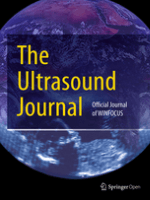
Ultrasound Journal
Empowering the Medical Community with Open Access ResearchUltrasound Journal, published by Springer, stands as a premier platform for disseminating cutting-edge research in the fields of radiology and ultrasound technology. Since its inception, this reputable journal has embraced Open Access principles, making significant contributions to the global exchange of knowledge since 2012. With an impressive Q1 ranking in both Radiological and Ultrasound Technology and Radiology, Nuclear Medicine and Imaging, it holds a notable position at the intersection of healthcare and technological advancement, reflecting its impact in the rapidly evolving medical landscape. The journal is recognized within the Scopus database, ranking 14th out of 47 in the health professions category, placing it in the 71st percentile overall. Addressed in the United Kingdom with a focus on rigorous peer-reviewed articles, the Ultrasound Journal seeks to unite researchers, practitioners, and scholars dedicated to improving diagnostic imaging and patient care through innovative ultrasound research and applications. For those who aim to stay at the forefront of this dynamic field, the Ultrasound Journal is an indispensable resource.

EUROPEAN RADIOLOGY
Leading the Way in Radiological ExcellenceEUROPEAN RADIOLOGY, published by SPRINGER, stands as a prestigious international journal in the field of radiology, nuclear medicine, and imaging, with an impressive impact factor that underscores its significance among peers. With an ISSN of 0938-7994 and an E-ISSN of 1432-1084, this journal provides a platform for cutting-edge research and advancements in medical imaging from 1991 to 2024. Recognized as a Q1 journal in both general Medicine and the specialized Radiology category by 2023, EUROPEAN RADIOLOGY ranks an impressive #17 out of 333 in its field according to Scopus, placing it in the 95th percentile. While it does not currently offer Open Access options, the journal remains essential reading for researchers, professionals, and students striving to stay at the forefront of developments in diagnostic imaging and related technologies. By contributing to a comprehensive understanding of radiological practices, EUROPEAN RADIOLOGY plays a crucial role in shaping the future of medical diagnosis and patient care.

Egyptian Journal of Radiology and Nuclear Medicine
Advancing the Frontiers of Radiology and Nuclear MedicineThe Egyptian Journal of Radiology and Nuclear Medicine, published by Springer, is a premier open access journal that has provided valuable insights and advancements in the fields of radiology and nuclear medicine since its initiation in 2010. With an E-ISSN of 2090-4762, this journal is dedicated to bridging the gap between research and clinical practice, allowing for the dissemination of high-quality research to a global audience. Situated in Germany, it enjoys a robust reputation in the academic community, evidenced by its categorization in the Q3 quartile for 2023, as well as its Scopus ranking, where it holds a position of #225 out of 333 in the domain of Radiology, Nuclear Medicine and Imaging, placing it in the 32nd percentile. The journal's open access model ensures that researchers, professionals, and students can freely access innovative studies, reviews, and case reports that discuss the latest methodologies, technological advancements, and clinical outcomes in radiology and nuclear medicine. As it looks toward its converged years spanning from 2010 to 2024, the Egyptian Journal of Radiology and Nuclear Medicine continues to be an essential resource for advancing knowledge and fostering ongoing collaboration in these critical fields.
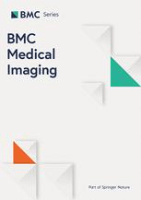
BMC MEDICAL IMAGING
Exploring Cutting-edge Techniques in Radiology and Nuclear Medicine.BMC Medical Imaging is a premier open-access journal dedicated to advancing the field of radiology, nuclear medicine, and imaging technologies. Published by BMC in the United Kingdom, this journal serves as a vital resource for researchers, clinicians, and students, fostering a collaborative environment for sharing innovative findings and methodologies in medical imaging. With a commendable impact factor and an impressive Scopus ranking within the top 35% of its category, BMC Medical Imaging provides a platform for high-quality research to be disseminated widely and freely since its inception in 2001. The journal aims to cover a diverse array of topics, from advanced imaging techniques to their clinical applications, enhancing the understanding and effectiveness of diagnostic practices. By contributing to the body of knowledge and facilitating open access to research, BMC Medical Imaging plays a pivotal role in shaping the future of medical imaging and improving patient care.
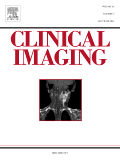
Clinical Imaging
Advancing the Future of Diagnostic ImagingClinical Imaging, published by Elsevier Science Inc, is a renowned journal dedicated to the field of radiology, nuclear medicine, and imaging. With an ISSN of 0899-7071 and an E-ISSN of 1873-4499, this esteemed publication has established its significance in advancing imaging science since its inception in 1989 and continues to make impactful contributions to the discipline through 2024. The journal holds a prestigious Q2 ranking in the category of Radiology, Nuclear Medicine, and Imaging, reflecting its critical role in bridging research and clinical practice. Currently ranked #113 out of 333 by Scopus, with a notable 66th percentile, it offers a platform for disseminating high-quality research, reviews, and case studies that inspire innovation and enhance imaging techniques. Although it primarily functions as a subscription-based journal, it remains dedicated to accessibility and the dissemination of pivotal findings that inform both academia and clinical settings. Clinical Imaging is essential for researchers, professionals, and students alike, offering insights that shape the future of diagnostic imaging.
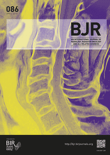
BRITISH JOURNAL OF RADIOLOGY
Exploring New Frontiers in Nuclear Medicine and ImagingBritish Journal of Radiology is a leading peer-reviewed journal published by the British Institute of Radiology, dedicated to advancing the field of radiology, nuclear medicine, and imaging. With a prestigious history dating back to 1945, this journal is at the forefront of disseminating cutting-edge research and innovations that significantly impact clinical practice. Currently enjoying a Q1 ranking in the field of radiology and Q2 in general medicine for 2023, it is recognized for its rigorous standards and high-quality content, ranking #87 out of 333 in Scopus for specialties related to Medicine, Radiology, Nuclear Medicine, and Imaging, placing it in the 74th percentile. Researchers, professionals, and students are encouraged to engage with the latest findings and comprehensive reviews presented within its pages, which contribute not only to academic discourse but also to the evolution of practice in the wider medical community.

Radiological Physics and Technology
Transforming insights into impactful solutions.Radiological Physics and Technology, published by SPRINGER JAPAN KK, is a prominent journal that serves as a crucial resource in the multidisciplinary fields of medicine and radiation sciences. With an ISSN of 1865-0333 and an E-ISSN of 1865-0341, the journal has been converging impactful research from 2008 to 2024. It holds a commendable position in academic rankings, currently classified in Q2 in Physical Therapy, Sports Therapy and Rehabilitation and Radiation, along with Q3 for Medicine (miscellaneous) and Radiology, Nuclear Medicine and Imaging. The journal is well-regarded in the academic community, reflected in its Scopus rankings that place it in the upper tiers of its respective categories. Although it currently does not offer Open Access, Radiological Physics and Technology remains a pivotal publication for researchers, academics, and practitioners seeking to advance knowledge and foster innovation in radiological science. Its commitment to disseminating high-quality research ensures its continued relevance and importance within these fields.

ULTRASOUND IN MEDICINE AND BIOLOGY
Connecting Acoustics to Clinical ExcellenceULTRASOUND IN MEDICINE AND BIOLOGY, published by Elsevier Science Inc, stands as a premier journal in the field of acoustics and ultrasonics, boasting an impressive impact factor that reflects its significant contribution to both theoretical and applied research. With its extensive scope covering advancements in biophysics, radiology, and ultrasound technology, the journal invites original research articles, reviews, and technical notes that explore the vast potential of ultrasound across various medical applications. Since its inception in 1973, the journal has carved a niche in the academic community, evidenced by its Q1 ranking in Acoustics and Ultrasonics and a commendable presence in other related fields. Though it does not currently offer an Open Access option, it remains accessible to a global audience of researchers, professionals, and students dedicated to the innovation of ultrasound methodologies and their clinical implications. The journal aims to foster a deeper understanding of the interplay between ultrasound technology and biological systems, thereby driving forward the frontiers of healthcare and diagnostic imaging.

Cardiovascular Ultrasound
Transforming cardiovascular imaging with accessible research.Cardiovascular Ultrasound, published by BMC, is a leading open-access journal dedicated to advancing the field of cardiovascular imaging through ultrasound techniques. Since its inception in 2003, this esteemed journal has provided a platform for high-quality research and innovative methodologies, contributing significantly to both cardiology and radiology. With an impressive impact in the academic community, it consistently ranks in the Q2 category for Cardiology and Cardiovascular Medicine, as well as in Medicine (Miscellaneous) and Radiology, Nuclear Medicine, and Imaging, as per the 2023 metrics. The journal aims to disseminate critical knowledge that enhances diagnostic practices, patient care, and clinical outcomes, making it an essential resource for researchers, clinicians, and students. Emphasizing the importance of accessible knowledge, Cardiovascular Ultrasound ensures that all published articles are freely available, fostering collaboration and innovation across the global community of cardiovascular professionals.